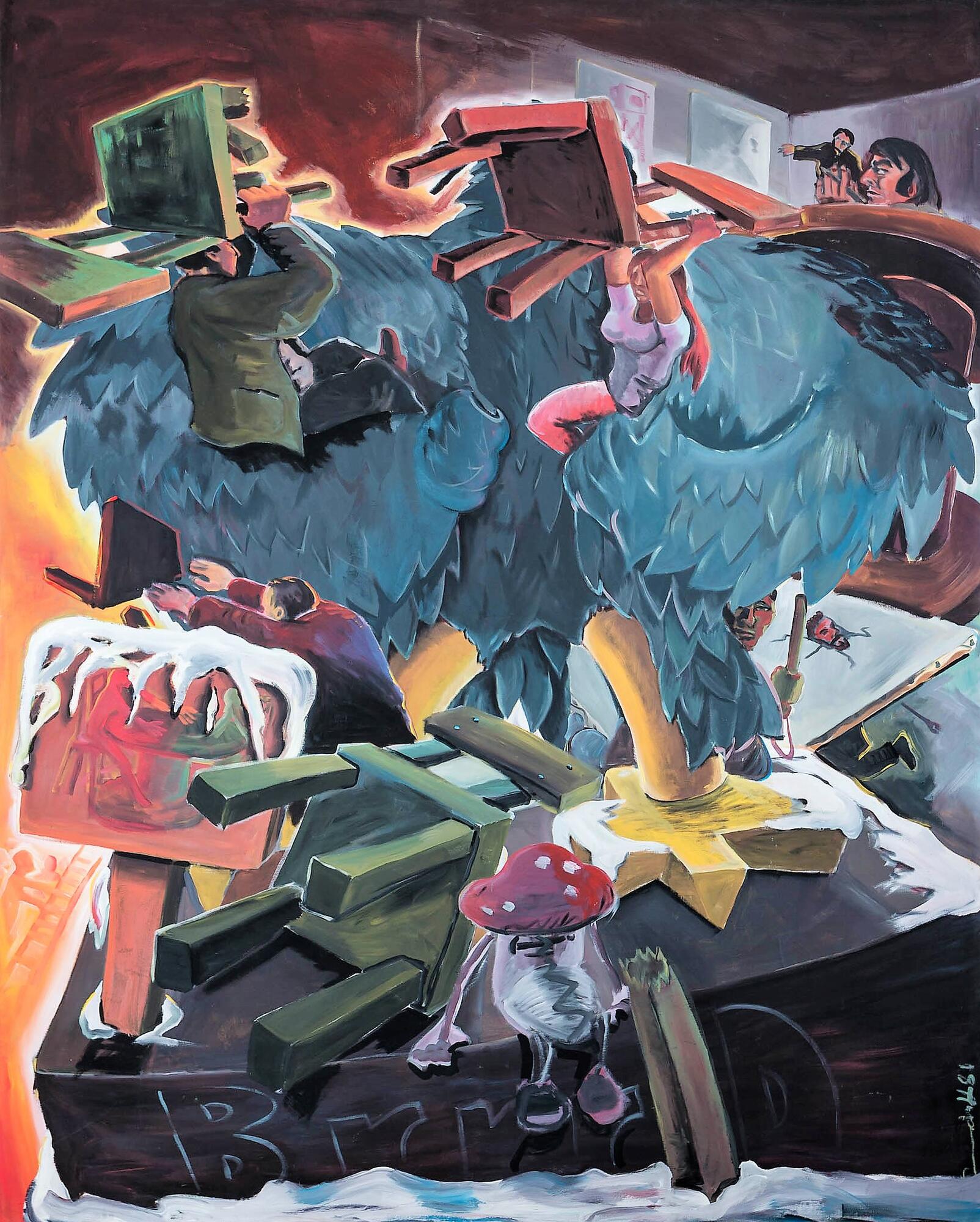Jörg Immendorff studied at the Academy of Arts in Düsseldorf with the set designer Theo Otto and the action artist Joseph Beuys. In 1969, he was expelled from the Academy for artistic provocations. From 1968 to 1981, Immendorf worked as an art teacher in Düsseldorf and remained a freelance artist. In 1996, he was appointed professor at the Düsseldorf Academy of Arts.
Jörg Immendorff was a prominent representative of German figurative painting. The rebelling artist repeatedly found himself at the center of scandals. Immendorf was worried about the very existence of art and the artist’s self-determination in a difficult political situation. So, in 1966, he created the work “Stop painting”, encouraging artists to actively engage in social and political struggles.
In the 1980s, Immendorf was interested in the influence of state control on creativity, and since the early 1990s, after the reunification of Germany, he reflected on spiritual resources and the place of the artist in modern life. The disunity in Germany always was his most painful issue. Immendorf believed that art should talk about the problems of society, so his work reflects mainly social or political themes. In this way, he followed the tradition of his teacher Joseph Beuys.
Immendorf’s painting “Chairs” is part of a series “Cafe Germany” consisting of 16 large-scale canvases. The central theme of this series was the confrontation between West and East Germany. The artist worked on the series from the mid-1970s to the mid-1980s.
The work is full of symbols that emerge throughout the cycle. The eagle from Germany’s coat of arms embraces two figures with its wings — a man and a woman. They fight violently, breaking chairs — this symbolizes the confrontation between East and West Germany. The artist portrayed himself in the picture twice: on the right side of the canvas, his head breaks through the canvas, and in the upper part of the picture he is depicted in the conventional space of an exhibition hall. The letters at the bottom edge of the canvas “BrrrD” represent the abbreviation “Bundesrepublik Deutschland” — the Federal Republic of Germany.
Jörg Immendorff was a prominent representative of German figurative painting. The rebelling artist repeatedly found himself at the center of scandals. Immendorf was worried about the very existence of art and the artist’s self-determination in a difficult political situation. So, in 1966, he created the work “Stop painting”, encouraging artists to actively engage in social and political struggles.
In the 1980s, Immendorf was interested in the influence of state control on creativity, and since the early 1990s, after the reunification of Germany, he reflected on spiritual resources and the place of the artist in modern life. The disunity in Germany always was his most painful issue. Immendorf believed that art should talk about the problems of society, so his work reflects mainly social or political themes. In this way, he followed the tradition of his teacher Joseph Beuys.
Immendorf’s painting “Chairs” is part of a series “Cafe Germany” consisting of 16 large-scale canvases. The central theme of this series was the confrontation between West and East Germany. The artist worked on the series from the mid-1970s to the mid-1980s.
The work is full of symbols that emerge throughout the cycle. The eagle from Germany’s coat of arms embraces two figures with its wings — a man and a woman. They fight violently, breaking chairs — this symbolizes the confrontation between East and West Germany. The artist portrayed himself in the picture twice: on the right side of the canvas, his head breaks through the canvas, and in the upper part of the picture he is depicted in the conventional space of an exhibition hall. The letters at the bottom edge of the canvas “BrrrD” represent the abbreviation “Bundesrepublik Deutschland” — the Federal Republic of Germany.



